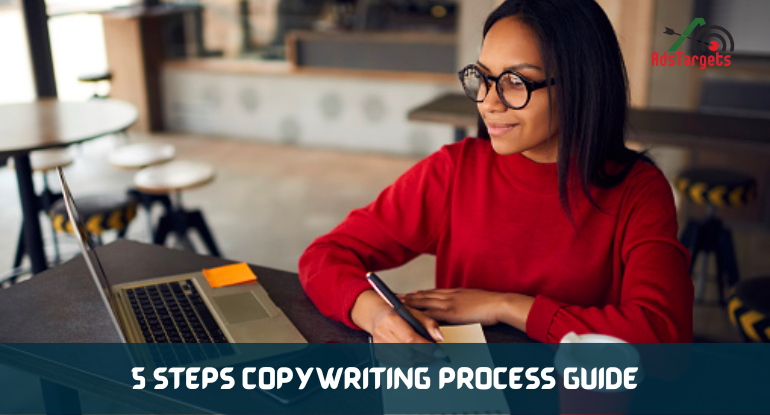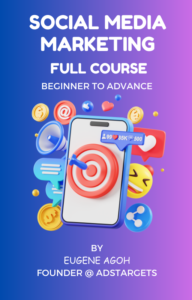I will keep this simple, alright? If you want to learn to write copy then simply pick up a pen and pull out your writing pad and start writing words, it is that simple.
However…
If you want to understand the copywriting and copywriting process, then you must be curious and teachable because it requires you to learn, relearn, unlearn, and begin the circle all over again.
The road to a successful copywriting journey follows this route: Preparation, Organization, Writing, Editing, and Review.
Now, I’m going to elaborate a bit in a second, however, first, I want to preface this post with a few notes. (If you are impatient then feel free to rush down and read the bolded titles.
Copywriting is a great skill for anyone to have. Companies always need someone who knows how to write copy. And if you write successful sales copy, you won’t run out of writing jobs
But, being successful at it takes a lot of work.
So, if you are reading this article because you want to pursue a career in copywriting, then buckle up your seat belt. You are on the right ride to the destination you have in mind
But let me drop a quick line before we drive further. You have got to be curious enough to learn in your own time and passionate enough to out of the woods.
You have to want to be better than the best in your niche. Prepare better. Organize better. Write better. Edit better. Review better. Sell better. Do everything better.
It is not some job you simply slap the title `Copywriter` on your resume and voila you are writing successful ads.
No. Copywriting is a constant state of asking yourself “How can I make this better?”
With all that being said, here is the copywriting process you need to follow to be a great copywriter
But first, let’s know what copywriting means
Table of Contents
ToggleWhat is Copywriting?
Copywriting is the act of writing content that contains unique, targeted, and relevant information to persuade a prospect.
Copywriters must be able to tell compelling stories through words and build an emotional connection with the customers.
So, copywriting is the art of using words to encourage prospects to take action. It is something you can achieve yourself or with a team of copywriters.
The Copywriting Process
#1. Preparation
Good ad copy begins with collecting quality information. And the best way to collect the information you need is with a thorough Q&A. Here are some key questions that will help you prepare for just about any ad writing project.
Don’t try to word slinger. at this point. Just gather as much information as you can. Feel free to add additional information as needed. Below is a sample of how your copy should look like:
#1.Description: Briefly throw light on the product you are marketing.
#2. Purpose: What is the customer expected to get from this product? State how it works.
#3. Price: What is the suggested price?
#4. Features: What are the most basic facts and specifications about this product?
#5. Benefits: What do the features mean for the customer? What challenges are solved? What needs are satisfied? Of all the benefits, which is the most crucial?
#6. Competition: From the customer’s point of view, why is this product better than what the competition has on its shelf?
#7. Your Business: Do you have an exceptional history, unique owner, or awards?
#8. Guarantee: How strongly do you believe in the product? How will you back up your belief in words? Money-back guarantee? Or a 30-day free trial?
#9. Prospect: Who do you visualize as the ideal customer? Income?, Job title? Male or female? Interests?, Concerns?, Fears?
#10. Objections: Why would a consumer not want this product?
#11. Testimonials and Endorsements: Reviews from happy users? Celebrity endorsements?
#12. Objective: What action do you want prospects to take when they see this ad? Buy immediately? Ask for more information. Come to your Website? Request a demo?
#13. Offer: What is the deal you are promising to prospects? Reduced price for a limited time? Gift with an immediate order? Free information?
#14. Deadline: When is the offer going to expire?
#15. Required Copy Points: What information or legal copy should be included?
#16. Method of Payment: Credit card? Installment Billing? PayPal?
#17. Method of Ordering: How should a customer place an order? Phone? E-mail? Fill out a Web form.


#2. Organize
After you have answered the above questions, your next point of touch is to organize your information.
This is simply a matter of writing the essential points succinctly. These are still just records for reference, but your copy is already starting to take shape.
Don’t take shortcuts, please don’t. The best marketing ideas come from this research and note-taking. And I have found that writing and rewriting notes is a grand way to focus the mind and shape ideas.
Here are the basic items you will need to write your copy:
#1. Description
#2. Purpose
#3. Price
#4. Features
#5. Benefits / Prime Benefit
#6. Guarantee
#7. Prospect
#8. Objective
#9. Offer
#10. Deadline
#11. Method of Payment
#12. Method of Ordering
You will notice that this list doesn’t include everything contained in the first step. Some of the information you collect in stage 1 is for background only.
The items in Step 2 are those most likely to be made use of directly in your copy.


#3. Write
Now that you have collected and organized your information, it’s time to start writing your copy.
#1. Write Your Headline.
Analyze your Prime Benefit, Offer, Price, Deadline, Prospect, Description, Method of Ordering, and Guarantee.
#1. Choose the information you want to highlight.
Choose a basic headline type that best conveys your message.
#2. Write multiple headlines and select the best.
7 Simple Headlines that perform well
#1. Direct: A direct headline comes right out and states your key idea. (“8-step online business plan generates cash at once”)
#2. News: People are attracted by the news. Words such as “introducing,” “announcing,” “new,” “now,” and “at last” indicate something newsworthy.
#3. How-To: This type of headline promises a solution to a problem or message of interest. (“How to quit smoking in 30 days”)
#4. Question: When it is connected to a benefit or the user’s concerns, the question headline is a high-powered attention grabber. (“How do I contact a pencom?”)
#5. Command: A command can shoot your headline into high gear and start selling instantly. (“Call now and reserve your Star Trek collectible”)
#6. Information: Consumers make buying decisions with the information you provide about your product.
By educating consumers, you gain their attention and trust. (“four things you won’t get on your average treadmill”)
#7. Testimonial: Nothing is more authentic than a customer endorsement. (“This workout program worked for me. It can work for you too!”)
#2. Write your subheads
#1. Analyze your Description, Benefits, Offer, Deadline, Features, Guarantee, and more.
#2. Choose the information that best broadens your headline
#3. Write your subheads in order of significance. Use the active voice and ensure every subhead has a benefit statement.
#3. Write your body copy.
Build on each subhead: List features. Explain each benefit. This may be the hardest part since the body copy will likely require the most number of words.
However, body copy is relatively simple to write once you have your headlines and subheads properly outlined.
Most good copywriters spend from 50% to 80% of their time on headlines. If your reader takes the time to read the body copy, they are already interested in what you are selling. All you need to do is offer clear details and support your headlines and subheads.
#4. Write your call to action (CTA)
Review your Method of Ordering, Price, Offer, Deadline, and Guarantee.
Write your call to action including all the above information that fits in. Use the active voice and be plain sailing and clear.
Spy on similar ads to see how other copywriters have structured the call to action. But do not turn yourself into a copycat here.
#4. Edit
For some writers, editing is the most difficult part of copywriting. But it’s essential to get the clean, crisp results you are looking for.
You must be ruthless at this stage. Don’t fall in love with your own writing, at least not yet. Every word must add its quota to the overall message.
If anything is wordy or unclear, cut it out. A long copy is cool. Just make sure that every word is pulling its weight, its own weight.
As you review your work, ask yourself the following questions:
#1. Does my headline get attention, choose an audience, deliver a complete message, and draw the reader into the body of my copy?
#2. Does my headline exploit human motivators such as fear, exclusivity, greed, guilt, or envy?
#3. Is my headline concise, clear, and to the point? Does it relate to the product?
#4. Do my subheads logically expand on the headline in order of significance?
#5. Is my body copy stuffed with facts or empty clichés?
#6. Do I ask for the order? Have I made it clear what I want the reader to do?
#5. Review
Put your copy aside for a few days and read it later when you are fresh. Try these techniques to review your ad copy.
Utilize the “5 Second Test.” Show the ad copy to a few objective people. If they don’t understand it at a glance in about 5 seconds, it isn’t going to work if it goes out.
Don’t play with the body of your copy. Revise the big things. Make your headline more succinct and direct. Clarify your offer. Give direct ordering directives.
Outline all the negatives. What’s wrong with the headline? The call to action? The mood of the copy. The tone? Be brutal and honest.
Don’t get attached to particular pet phrases or words. This is not art, after all. It’s business. So if something needs to be changed, go ahead and do it.
Consider one other way to write the ad copy. Even if you have a successful formula, there are always other ways that will work. If you keep an open mind, you just might find a better approach. Or you may discover improvements you can add.
Try the “Stop or Go Test” You should generally speak in the second person, using words such as `you` and `your`
And you should keep from speaking about yourself too much, with words such as “I,” “our and “we”. So, with a blue pen, circle all words referring to your audience.
Then, with a green pen, circle all words referring to you. If you see a lot of blues, your copy is a go. If you see a lot of green, stop and edit.
Conclusion
You have learned from this article that you cannot do copywriting… quickly.
That you cannot learn to write high-conversion headlines… quickly.
The central message is, if you want to be really good at copywriting, there is no “quickly”.
This copywriting thing is a muscle, it is a process. You need to train on it, you need to work on it, and every time you sit down at the keyboard you need to push yourself to be better than you were yesterday.
Otherwise, you will end up writing crap. And that’s not what your copy is to be called when it arrives before your targeted reader.
You have to follow the copywriting process to arrive at a successful copy, a copy that would be read to the end and desired action taken by your ideal reader.




